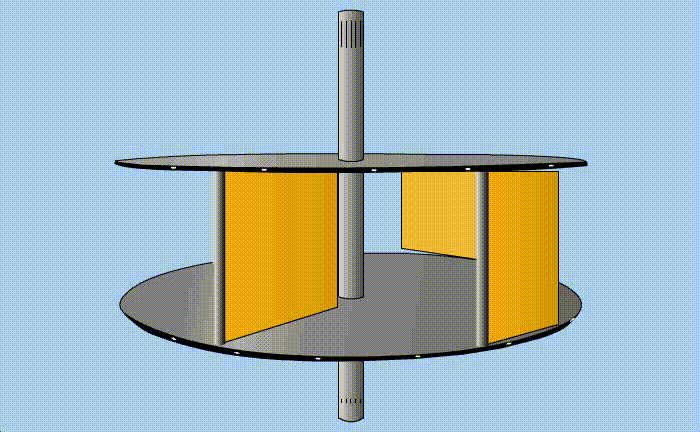The Technology Behind The Design
Moving water, being 840 times denser than air carries a vast amount of kinetic energy, as the December 2004 tsunami sadly showed. Many tidal turbine designs being tested at the present time have very slim propeller or foil blades which require water flow speeds in the 3 to 4 m/s range to be effective, these tidal speeds only happen in a very few locations around the world, limiting their deployment.
Side Drive tidal turbines however, have much larger blade areas and can operate successfully in water flows between 1 and 2 m/s, these lower speed water flows are found in a great many tidal areas of the world and also includes several ocean currents, making the possibility of local energy extraction a reality.
Both MCT Ltd in the UK and Verdant Co in the USA, the two major companies at the forefront of tidal stream turbine research at the present time have had major problems with propeller blades snapping off due to excessive loading on the single axis point of loading where the propeller joins the hub. The Hales Turbine design overcomes this problem by having four points of support, one at each corner of the turbine power blade, while it is under load, so can operate safely in areas of high turbulence and load stress.
As side drive turbines rotate slowly with the blades only operate in a drag type Mode, which means the blade turns at the speed of the water flow, the blades can be made stronger to withstand the high stress loads created by the water flow, unlike propellers and foils which also try to produce a lift effect to improve their performance, they have to be finely shaped and angled because of such a small contact area between blades and the water flow to absorb the energy.
The Hales Tidal Turbine uses this side drive concept and adds new innovative ideas to improve its output and potential use, such as special forms of ducting are being researched to allow water flow concentration, thus allowing small turbines to be used in even slow water flows such as the English Channel.

